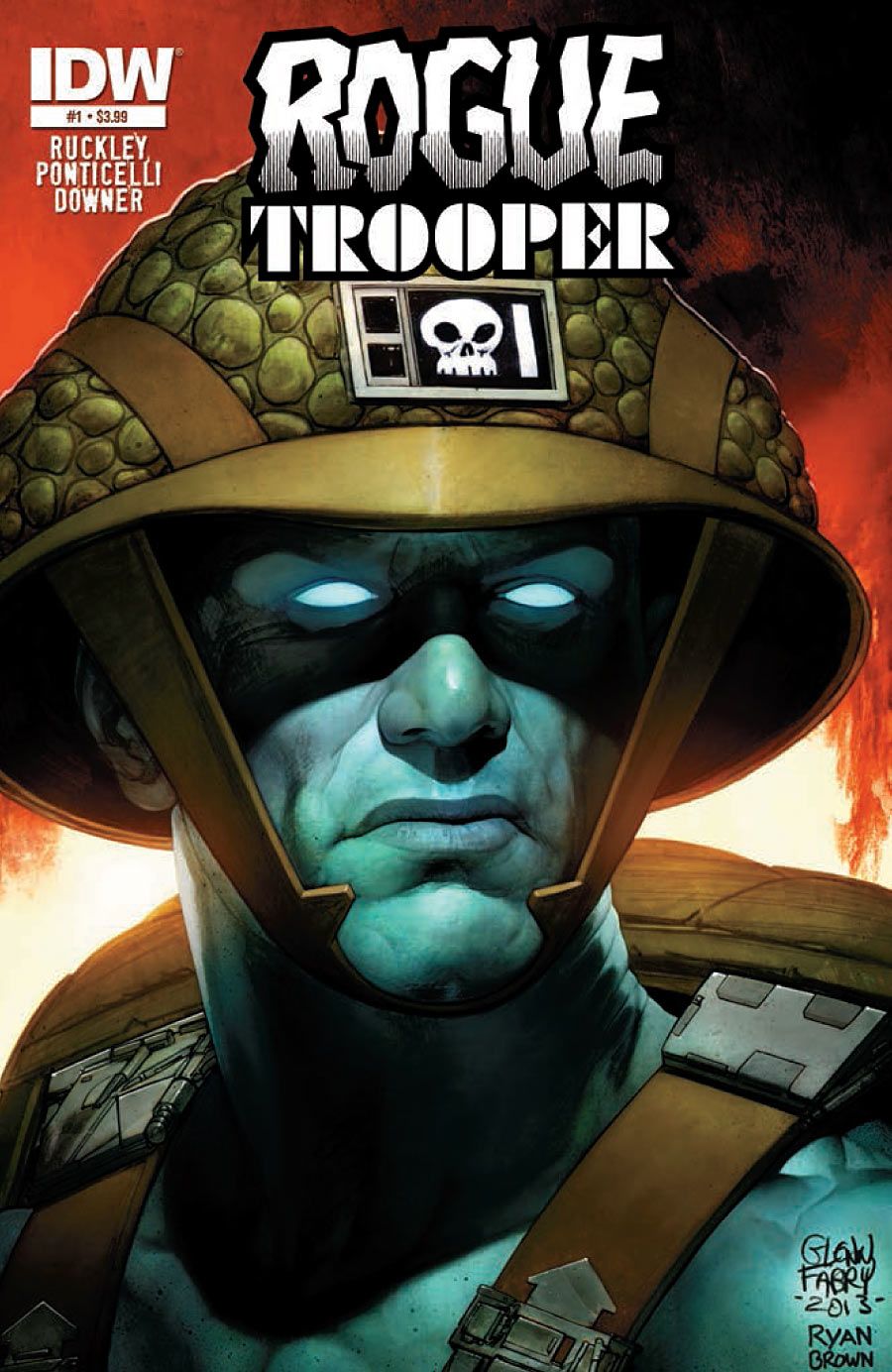This isn't the first time that IDW has turned to "2000 AD" for material, and if Brian Ruckley and Alberto Ponticelli's "Rogue Trooper" lives up to this first issue, it probably won't be the last. Having found success with the relaunch of "Judge Dredd" in 2012, IDW has now turned its eyes to "Rogue Trooper."
Though it definitely doesn't feel like a fresh take on the Trooper, this first issue executes exceptionally well on the familiar premise. It may not make the case for itself as a unique take, but it does make a case for Rogue Trooper as a property that ages well and deserves a renewed audience. Gritty war-torn science fiction isn't usually my scene, and I still found myself enjoying the issue immensely. For all the ponderousness in its tone, it moves quickly and energetically.
Armed, blue and dangerous, Rogue Trooper is the last surviving Genetic Infantryman (G.I.), who wanders the toxic wasteland of Nu-Earth seeking answers and vengeance. He's accompanied by the bluntly named bio-chips of his fallen brothers: Gunnar the gun, Helm the helmet and Bagman the bag. Ruckley and Ponticelli have given everyone a slightly updated look, but they mostly stick to the same formula as the original. The Rogue Trooper is still a pretty humorless guy, without almost no personality, so the interjections of Gunnar, Helm and Bagman are much appreciated. Ruckley makes great use of them as props and voices of the reader. They're also used for subtle exposition that does exactly what great in-world exposition ought to do: reveal more about the world while also revealing more about the character who's speaking.
In fact, the exposition overall is very neat and restrained. Ruckley does resort to a voice-over introduction, but the tone is so well-crafted that it doesn't feel as gimmicky or obvious as it ought to. The dialogue doesn't sound like barely masked explaining. It's got enough gravity to sound like a commander trying to instill a healthy sense of fear in his troops before sending them out. The whole issue shows this same consistency and mastery of tone. Ruckley has a great ear.
As for the eyes, Ponticelli employs his gift for the grim and gritty. Nu-Earth is a land of desolate landscapes and man-eating super cockroaches, and all the fights are as deadly as they are swift. With his heavy inking and tough lines, he's a perfect fit for this series -- which is not to say that the art didn't have some problems. Rogue Trooper's body type switches from skinny to bulky depending on the panel, and only one or two of the scene-setting panels make a real impact. Still, it's easy to see why Ponticelli's on this book.
On colors, Stephen Downer really nails the blue of Rogue Trooper's skin. He manages to make it look alive, alien and still in-tune with Ponticelli's dead, acid-washed planet. I wasn't expecting it to be so successful. However, Downer doesn't always do as well with the backgrounds. Sometimes Nu-Earth looks much shinier and more generic than one would like, but it's a problem that could disappear after a few more installments.
To a cynic, this might seem liked a naked attempt to raise the profile (and thereby profitability) of an established IP. Even if that's so, this one can be chalked up as a success. Ruckley and Ponticelli have made a strong case for giving "Rogue Trooper" his own series. Going forward, though, they'll need to make a case for the stories they plan to tell about him.

